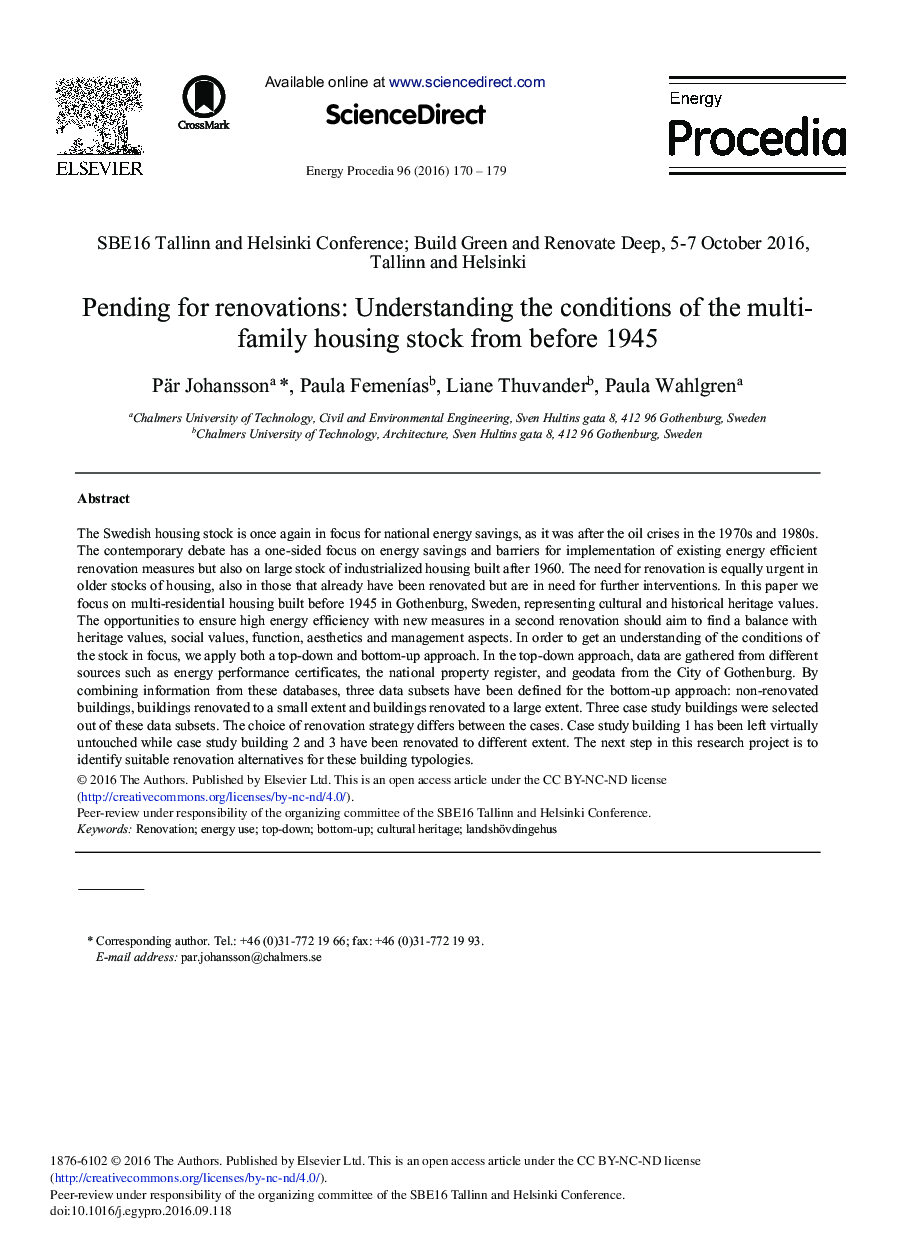| Article ID | Journal | Published Year | Pages | File Type |
|---|---|---|---|---|
| 5446713 | Energy Procedia | 2016 | 10 Pages |
Abstract
The Swedish housing stock is once again in focus for national energy savings, as it was after the oil crises in the 1970s and 1980s. The contemporary debate has a one-sided focus on energy savings and barriers for implementation of existing energy efficient renovation measures but also on large stock of industrialized housing built after 1960. The need for renovation is equally urgent in older stocks of housing, also in those that already have been renovated but are in need for further interventions. In this paper we focus on multi-residential housing built before 1945 in Gothenburg, Sweden, representing cultural and historical heritage values. The opportunities to ensure high energy efficiency with new measures in a second renovation should aim to find a balance with heritage values, social values, function, aesthetics and management aspects. In order to get an understanding of the conditions of the stock in focus, we apply both a top-down and bottom-up approach. In the top-down approach, data are gathered from different sources such as energy performance certificates, the national property register, and geodata from the City of Gothenburg. By combining information from these databases, three data subsets have been defined for the bottom-up approach: non-renovated buildings, buildings renovated to a small extent and buildings renovated to a large extent. Three case study buildings were selected out of these data subsets. The choice of renovation strategy differs between the cases. Case study building 1 has been left virtually untouched while case study building 2 and 3 have been renovated to different extent. The next step in this research project is to identify suitable renovation alternatives for these building typologies.
Related Topics
Physical Sciences and Engineering
Energy
Energy (General)
Authors
Pär Johansson, Paula FemenÃas, Liane Thuvander, Paula Wahlgren,
